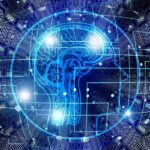The engineering profession is entering a transformative era driven by the rapid advancements in artificial intelligence (AI). Many tasks that were once considered beyond the reach of automation are now being revolutionised by AI technologies. This shift emphasises the importance of embracing AI tools to stay relevant in an industry that is rapidly evolving. For engineers, upskilling in AI generative tools is no longer a luxury but a necessity. These tools can significantly enhance productivity. Without these skills, engineers risk becoming obsolete as the industry continues to evolve and demand more technologically proficient professionals.
In Germany, a robot has been designed specifically to construct houses, drastically changing traditional building methods. Unlike conventional construction, which requires extensive use of concrete and manual labour for laying blocks, this advanced robot performs nearly all tasks on the construction site. The robot is mounted on a truck, enabling it to move efficiently around the site, and is capable of constructing buildings up to eight stories tall. Its impressive 25-meter-long arm is equipped with a camera and laser tracking system, which ensures that each building block is placed with extreme precision.
One of the robot’s key features is its ability to automatically adjust blocks to fit perfectly into place. If a block is too large for the designated spot, the robot can cut it down to the correct size before placing it. This automation allows the robot to work with a high degree of accuracy and efficiency that surpasses human builders. The robot’s capabilities are so advanced that it can complete tasks 10 times faster than a traditional construction team, revolutionising the speed at which homes can be built. Before construction can begin, detailed plans and models of the building are created using computer-aided design software. These digital blueprints are then transmitted to the robot, guiding its actions throughout the construction process. By relying on this technology, the robot ensures that the house is built exactly according to the plan, from the foundation to the final block, significantly reducing human error and improving overall construction quality.
The development of autonomous vehicles, which are vehicles capable of driving themselves from one place to another without a human driver behind the wheel, has become a reality thanks to advances in AI. These self-driving vehicles rely heavily on sophisticated AI systems to navigate, respond to their environment, and make driving decisions. The AI algorithms that control the car’s steering process data collected from a network of cameras and sensors installed around the vehicle. In fact, each autonomous vehicle is equipped with more than 100 sensors that continuously monitor the surroundings.
- Hardship: Petroleum station workers decry marginalisation
- Nigeria’s flooding: Rising waters, sinking hopes
These sensors and cameras capture detailed information, such as the layout of the road, the positions of other vehicles, pedestrians, and any potential obstacles. The AI then processes this data in real-time to make decisions about the car’s movements, such as whether to continue straight, turn, change lanes, make a U-turn, or stop completely. For instance, if the AI detects a sharp curve ahead through the camera feed, it will adjust the steering to safely navigate the bend.
The AI system works much faster than a human driver, constantly analysing the environment to ensure the car operates smoothly and safely. In the future, the focus of car manufacturing is expected to shift more toward software development than traditional physical design. This is because the core of an autonomous vehicle’s function lies in the software that controls the steering, navigation, and decision-making processes.
As AI becomes more advanced, the software controlling these vehicles will evolve to become even more intelligent and capable, making driving more efficient and reducing the likelihood of human error on the roads. Autonomous vehicles represent a significant shift in how we think about transportation, with software playing an increasingly critical role in their operation.
The evolution of the hardware design flow, increasingly influenced by AI, involves a series of structured steps that hardware designers follow to create integrated circuits or printed circuit boards. While these steps may vary depending on the complexity and requirements of the device, the process remains a progressive refinement of an initial concept, where each step adds critical implementation details.
AI now plays a pivotal role in optimising various stages of this flow. For instance, in the specification and architectural design phases, AI-driven algorithms can predict optimal configurations based on performance and power requirements, such as in designing energy-efficient processors for mobile devices. AI-enhanced Electronic Design Automation tools further assist in behavioural modeling by automating the generation and simulation of complex hardware descriptions, accelerating the verification of functionality for components like neural network accelerators in AI chips.
During logic and physical design, AI can optimise circuit layouts to minimise latency and power consumption, crucial for high-performance GPUs used in machine learning tasks. In the verification stage, AI can automate the testing process by simulating a broader range of conditions and edge cases, improving the reliability of devices like autonomous vehicle sensors.
Additionally, AI enhances the prototyping phase by identifying potential design flaws through predictive analytics, reducing the need for multiple physical iterations. This AI-driven automation not only speeds up the overall hardware design process but also allows for the creation of more complex, efficient, and reliable systems, from smart home devices to advanced robotics, marking a significant shift in how modern hardware is conceptualised and brought to life.
Autodesk leverages AI to enhance engineering tasks by automating complex processes and improving design accuracy. In Fusion 360, for instance, the generative design feature uses AI to explore thousands of design permutations based on user-defined goals and constraints, such as weight, strength, and material use. This allows engineers to quickly identify optimised solutions that may not have been apparent through traditional methods. In Revit, Autodesk’s AI capabilities extend to Building Information Modeling (BIM) through features like clash detection.
AI-powered clash detection automatically identifies and highlights design conflicts in complex BIM models, ensuring that potential issues are addressed early in the design phase, thereby reducing costly rework during construction. Furthermore, Autodesk’s AI-driven insights in construction planning and project management help in predicting project risks and optimising resource allocation, making engineering projects more efficient and reducing overall costs. While the impact of AI is being felt across different aspects of engineering, space limitations prevent an exhaustive exploration here.
Chiroma, Ph.D. Artificial Intelligence, University of Hafr Batin, Saudi Arabia

 Join Daily Trust WhatsApp Community For Quick Access To News and Happenings Around You.
Join Daily Trust WhatsApp Community For Quick Access To News and Happenings Around You.


